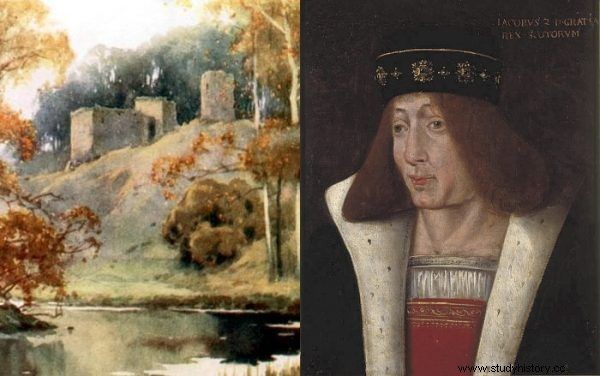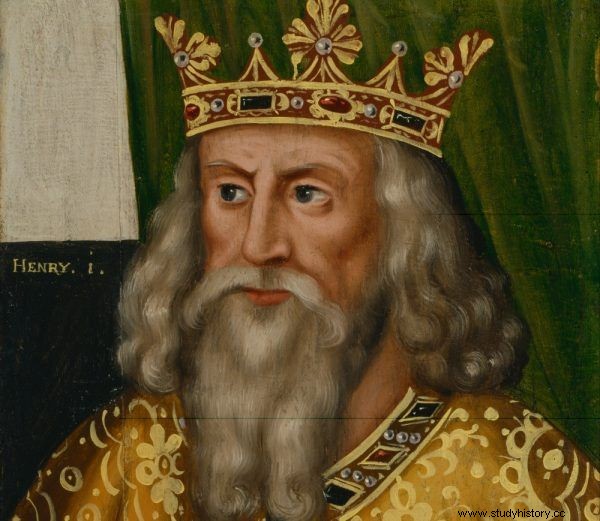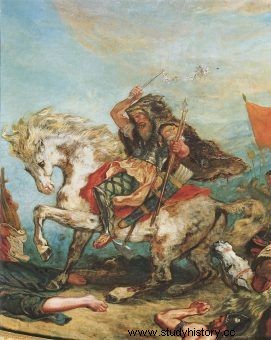Bitten by ... a corpse. Banging your head on the doorframe. Unrestrained laughter after eating the whole goose. Doesn't sound scary? And yet, in this apparently innocent way, even crowned heads perished. Who is it and why the victims of these and other equally absurd accidents could not be saved from death?
The day and hour of his death is known to neither the simple subject nor the ruler of a mighty empire. The difference is that if the former dies stupidly, no one will remember it. For the latter, historians and descendants, on the other hand, will reproach all vices, considering the less glorious descent as an example of the operation of historical justice.
Whether we blame the death on blind chance or the punishing hand of Providence, one thing is certain. The unlucky ones who ended their life and reign as a result of more or less extraordinary events were never lacking in history.
7. Deadly Bite
At least a few rulers have fled the earthly vale as a result of extremely unfortunate bites. Sometimes understood metaphorically, as in the case of the King of Scotland, James II. He died in 1460 during the siege of the English castle of Roxburgh. He was killed ... by his favorite cannon. And because he called them the Lion, the soldiers later joked that "the lion bit his master".

The King of Scotland, James II, died from the "bite" of his "lion" during the siege of Roxburgh Castle.
The king of Greece, Alexander I, parted more literally. The monarch was bitten by a monkey when he tried to separate it from the dog. He died on October 25, 1920, after three weeks of serious illness.
The most spectacular, however, was the bite which ended the career of Sigurd the Mighty, the Orkney Jarl and uncle of the first Duke of Normandy, Rollon, in 892. Teeth stuck into him… the dead enemy, the leader of the Scots. Legend has it that the Viking, as a sign of victory, cut off his rival's head and strapped it to his saddle as a trophy. At a gallop, one of the defeated's long teeth, however, stuck into the warrior's thigh, causing a fatal infection . On the islands, for many years, it was remembered that the Scottish chief had recovered from the invaders.
6. "Happy" shot
Sometimes the cause of the tragedy was just bad luck. Perhaps this is how the case of Charles VIII, who died after hitting the doorframe with his head, should be assessed in this way. Or the story of Richard the Lionheart, by Steven Runciman called "a bad son, a bad husband and a bad king, but a brave and great soldier."
The English ruler survived the many dangers that awaited him during the Crusade. He died in Europe as a result of an extremely unfortunate accident during the siege of Châlus-Chabrol. An arrow from a young archer caught him. The boy was aiming for the king's head, but he hit a bare neck.
At first it seemed that the wound was not fatal. Besides, the king might not have had to die even if the shooter hadn't missed. As Cody Cassidy and Paul Doherty write in the book "You're Dead Already", it would be enough for the arrow to miss the brain stem. After all, he is responsible for maintaining basic life functions:
It is not a foregone conclusion that any other part of the brain would have been damaged. The brain is malleable and can delegate tasks to other, undamaged areas. It is also divided into hemispheres - right and left - so if the damage is limited to one of them, the organ can endure a lot.
Unfortunately, , despite such great prospects, an infection entered the wound. And it was already deadly . Regardless, Richard should have put on the armor that day.

Richard the Lionheart was killed by an arrow. The archer missed the target, but the wound proved fatal anyway…
5. Laugh your head off
Immoderation in the enjoyment of worldly pleasures has always been the domain of rulers. Some liked the pleasures of the bed, others preferred the pleasures of the table. The king of Aragon, Marcin I Human, who ruled at the turn of the 14th and 15th centuries, was one of the latter. One evening he ate a whole roast goose at a feast!
The greasy delicacy, however, turned out to be his last meal. All because of the jester who, after the ruler went to rest in his chambers, decided to amuse him. He did so well that Marcin literally burst out laughing.
4. Big grub
A similar end, more than three centuries later, met the King of Sweden, Adolf Frederick. His last meal was a mountain of caviar, smoked fish, and seafood, lavishly doused with champagne. For dessert, he absorbed an additional 14 portions of semla, i.e. cookies traditionally eaten in Sweden on the last day of the carnival. In the end, the monarch's stomach, burdened to the limit, could not stand it.

The excessive amount of semli together with an enormous dinner killed the king of Sweden.
Is it really possible? Cassidy and Doherty in "You're Dead Already" say yes. The abdominal cavity has its "tipping point", as we know from a nineteenth-century Swedish physician, Algot Key-Åberg. He found this out when lavishing the stomach of a patient who had overdosed on opium:
Unfortunately, drug use by the victim inhibited the usually well-functioning gag reflex, so his abdomen burst like a balloon full of water and the patient died on the operating table.
Intrigued, the medic decided to investigate the matter. After a series of experiments on the cadavers, he concluded that the peak capacity of our stomachs is four liters of food. It is worth remembering about this when taking another dose of dessert after a hearty dinner ...
3. Killer Treats
Not only the sheer amount of food could have fatal consequences. A few monarchs, though perhaps in a slightly less spectacular way, killed… their refined culinary tastes. For example, the favorite dish of Henry I Beaucler was lampreys. The English king had them handed over to himself one day after returning from hunting in the woods near St. Denis.

Henry I Beauclerc paid with his life for his love of lampreys.
Contrary to the physician's prohibitions, the greedy connoisseur has eaten indecently . As a result, he fell into a coma, and not long after that he developed a high fever. On December 1, 1134, he died. Interestingly, the doctor who was ordered to remove the king's brain was also fatally poisoned. In the end, the proud and ambitious ruler rested in Caen next to his father, William the Conqueror, crafted for transportation like creatures he liked so much.
2. Dooming… politeness
The most famous death in history related to the necessity to fulfill a physiological need happened to a man who would go down in history even if he descended from this world in an ordinary way. His name was Tycho Brahe and he was a Danish Renaissance astronomer.
The scientist studied in Germany, where he gained knowledge, but lost part of his nose in a duel. After returning to Denmark, he worked for more than two decades without a telescope, using instruments of his own construction. Although he questioned the theory of Copernicus, on the other hand, his achievements enabled his collaborator Johannes Kepler to discover regularities in the motion of the planets.

Other senseless deaths in history are described by Cody Cassidy and Paul Doherty in their book "Already not living", published by Znak Horyzont.
It is thanks to the latter that we know the colorful circumstances of the astronomer's death. Well, in 1601, at a feast given by the king, he drank his beer. The effect was predictable:he soon felt he had to go to the toilet. However, etiquette forbade leaving the table if the ruler was still seated at it. The brave explorer of distant planets decided to endure. He sat until his bladder burst. And Prague beer lovers keep repeating that they do not want to die like Brahe - out of politeness ...
1. Tragic wedding night (other than what you think)
History knows many examples of cruel leaders who did not live to be in their old age. An exceptionally embarrassing death befell Attila in 453, the terror of the Christian world whose empire stretched from Denmark to the Balkans and from the Rhine to the Caspian Sea. Millions of people trembled in front of the "Scourge of God", and he was killed by ... the usual bleeding from the nose. At least that's what one legend says about the death of the Hun chief.

The "scourge of God" died from a common nosebleed. Illustrated by Attila in a 19th century painting by Eugène Delacroix.
Apparently, during his wedding with the young and beautiful princess Ildico, the brilliant commander first got drunk to death, and then willingly took to fulfill his marriage duties. However, as reported by the Roman chronicler Jordanes, instead of drowning in the arms of his delightful wife, he drowned himself in his own blood.
According to other accounts, the deadly hemorrhage had an even more trivial cause. Well, Attila chased the newlywed bride around the tent and ... blew his head straight into the post.
Check where to buy "You are dead":
